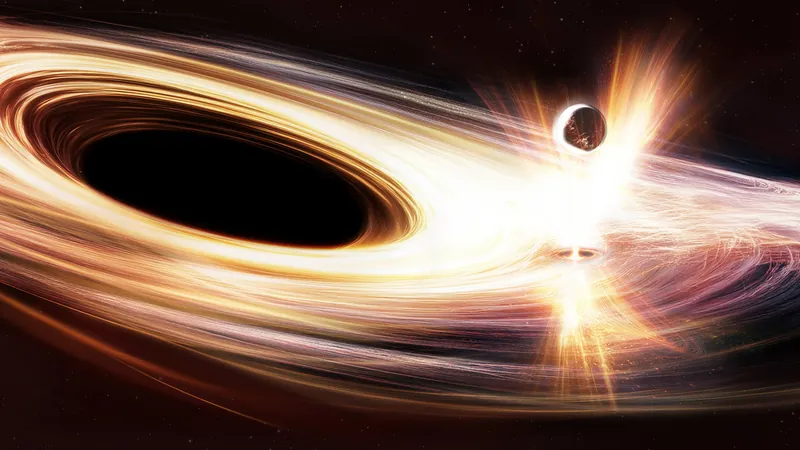
NASA's Discovery: Monster Black Hole Erupts with Record-Breaking X-Ray Flare!
2025-04-11
Author: Wei Ling
A Cosmic Giant's Awakening
Imagine waking up in a terrible mood — now multiply that by a million! A newly discovered supermassive black hole, lurking at the center of the galaxy SDSS1335+0728, has been caught in a dramatic outburst. This isn't just any black hole; it’s a cosmic titan approximately 300 million light-years away that has just unleashed the most powerful and prolonged X-ray blasts ever seen from such a massive entity.
What Sparked This Ferocious Activity?
After decades of relative silence, this colossal black hole has entered an active phase, marking the beginning of its voracious consumption of surrounding matter. It's currently showcasing a series of brief yet intense flaring events known as quasiperiodic eruptions (QPEs). This active center of the galaxy has been dubbed "Ansky" by the research team.
Monitoring in Real-Time: A Unique Opportunity
The resurrection of Ansky first caught the attention of astronomers in late 2019. Utilizing NASA's Swift X-ray space telescope, researchers have been able to observe Ansky’s dramatic flares in real time. By early 2024, the black hole began emitting bursts at regular intervals, offering a rare glimpse into the life of a feasting and erupting supermassive black hole.
Astounding Energy Levels Unleashed!
Team member Joheen Chakraborty from MIT revealed, "The X-ray bursts from Ansky are ten times longer and brighter than those from a typical QPE." This astronomical outburst is releasing a staggering hundred times more energy than we usually detect. The cadence of these eruptions is also unprecedented, occurring approximately every 4.5 days.
Challenging Existing Theories
Despite the exceptional data, scientists are scratching their heads over the reasons behind Ansky’s explosive behavior. Traditionally, QPEs have been linked to supermassive black holes devouring stars that venture too close. However, in Ansky's case, there’s no evidence of stellar destruction.
A New Understanding on the Horizon?
Erwan Quintin, an ESA Research Fellow, stated, "We have more models than actual observations, and we need further data to piece together the mystery of these eruptions. Contrary to our assumptions, Ansky's activities seem to paint a different picture of how these massive entities interact with their surroundings." Furthermore, he hinted at a potential link to gravitational waves that the upcoming ESA/NASA mission, LISA, may detect after its launch in 2037, emphasizing the value of X-ray data in unraveling the secrets of supermassive black holes.





 Brasil (PT)
Brasil (PT)
 Canada (EN)
Canada (EN)
 Chile (ES)
Chile (ES)
 Česko (CS)
Česko (CS)
 대한민국 (KO)
대한민국 (KO)
 España (ES)
España (ES)
 France (FR)
France (FR)
 Hong Kong (EN)
Hong Kong (EN)
 Italia (IT)
Italia (IT)
 日本 (JA)
日本 (JA)
 Magyarország (HU)
Magyarország (HU)
 Norge (NO)
Norge (NO)
 Polska (PL)
Polska (PL)
 Schweiz (DE)
Schweiz (DE)
 Singapore (EN)
Singapore (EN)
 Sverige (SV)
Sverige (SV)
 Suomi (FI)
Suomi (FI)
 Türkiye (TR)
Türkiye (TR)
 الإمارات العربية المتحدة (AR)
الإمارات العربية المتحدة (AR)